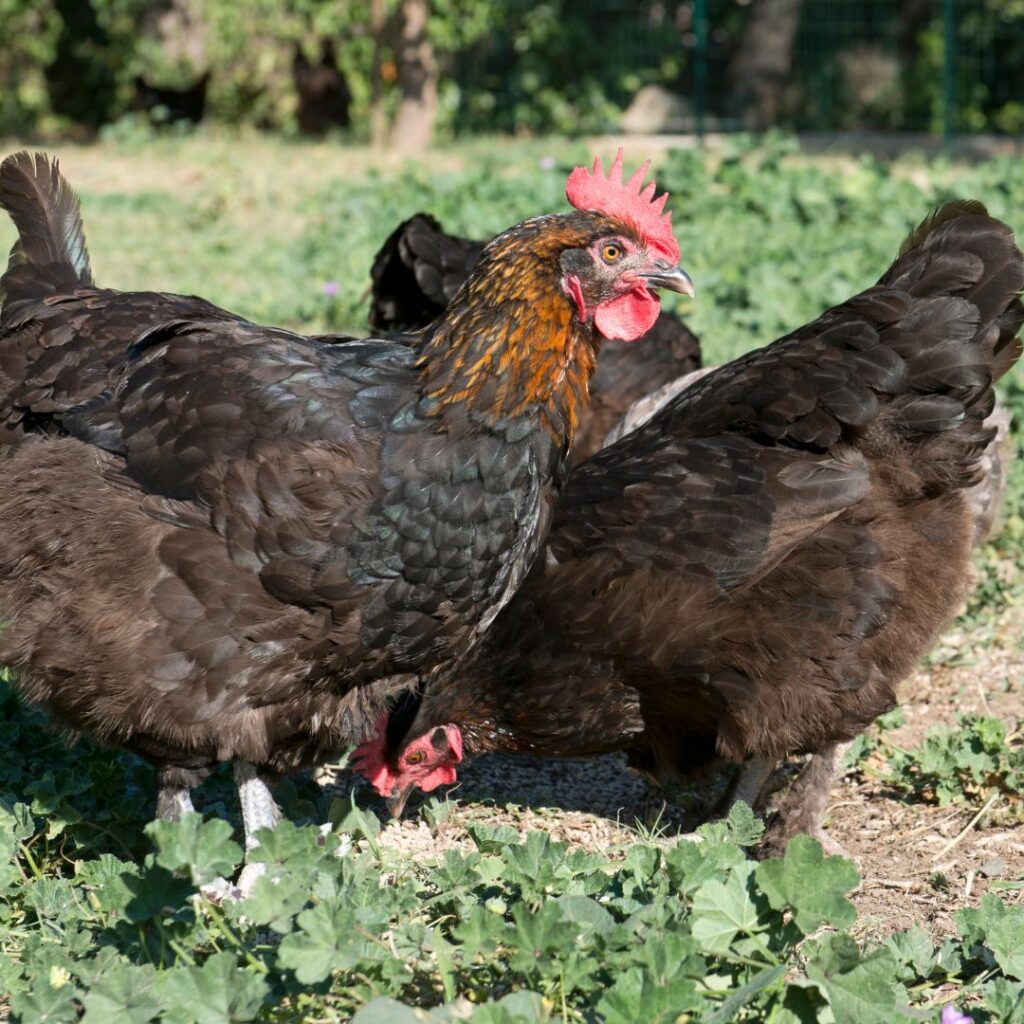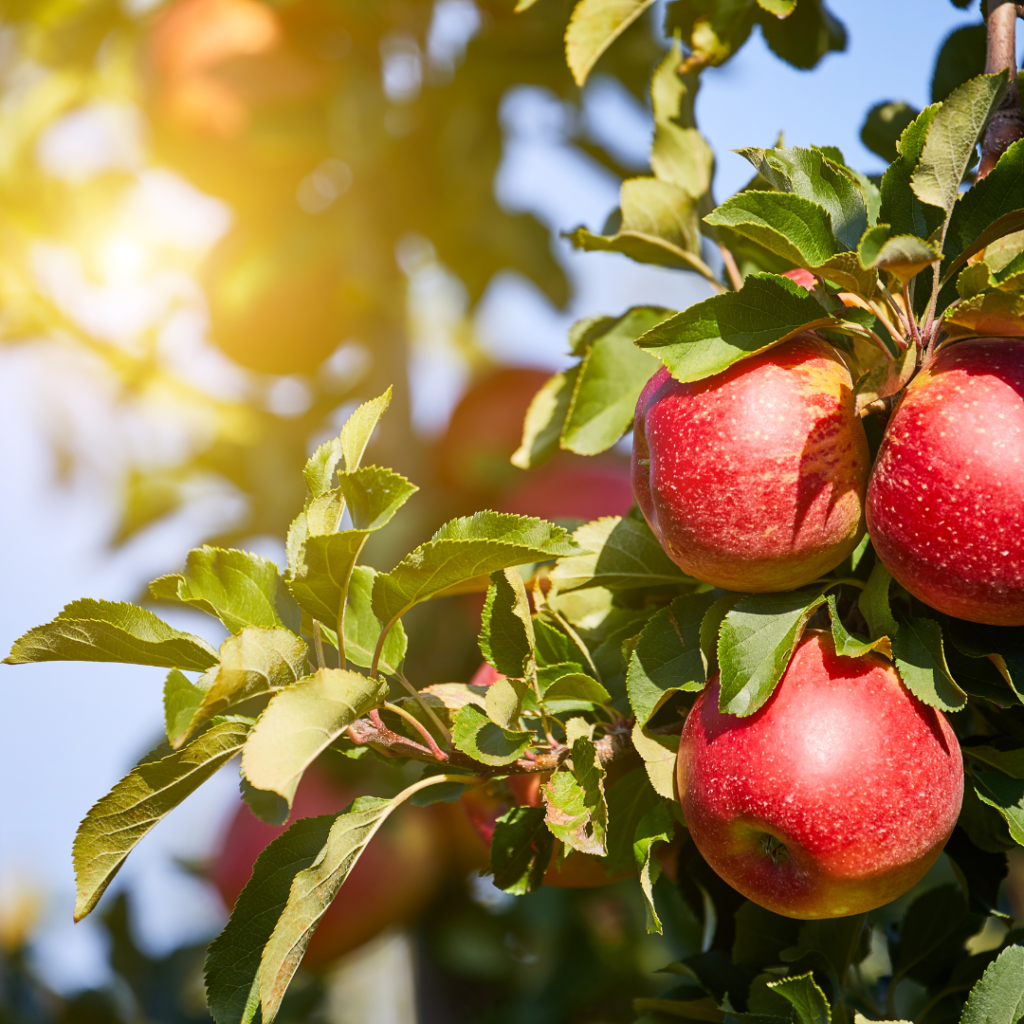Have you ever seen a chicken that seemed huge?
If you’re looking for the largest chicken breed—one that will grow to be big and strong—look no further than these 11+ of the world’s largest chicken breeds.
Some people may think larger chickens are better chickens, but there is much more to consider before making this decision.
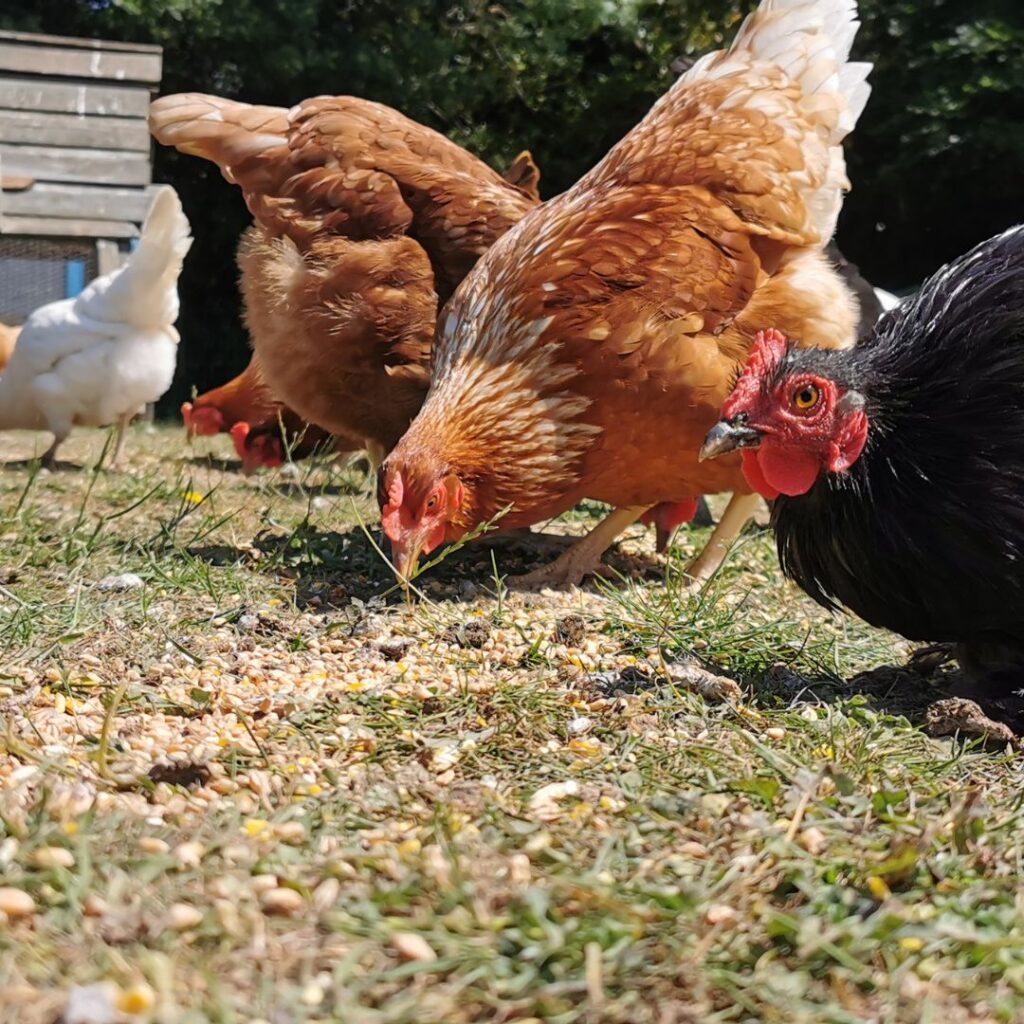
There are countless breeds of chickens to choose from, each with its own unique characteristics and benefits. You’ll want to consider space available to raise your chickens, size of chicken coop, size of nesting box, how many eggs they lay, do they do well in your part of the country; meaning do you want a heat tolerant or cold hardy breed (climate), personality, and more.
Note: You can find all you need to know about caring for chickens during harsh winter months here.
Let’s take a look at some of the pros and cons of having large chickens.
Benefits of A Large Chicken Breed; Does Size Matter?
Larger chicken breeds offer several distinct advantages to their owners. For starters, they’re often more resilient against predators than smaller breeds, making them ideal for free-range environments.
Another benefit to owning large breeds of chickens is that they can be used as dual-purpose birds. These types of birds can be raised for both meat and eggs.
Large chickens are also good foragers, which means they can help reduce feed costs by finding their own food in your backyard.
Most are also dependable egg layers and can produce 200+ eggs per year. Some large chicken breeds lay colored or tinted eggs as well, so if you’re looking for something unique, these could be great options.
Plus, many people find that larger chickens have calmer temperaments than smaller ones.
What Is The Largest Chicken Breed In The World?
The Jersey Giant chicken is known as the largest ‘breed of chicken’ in the world. There have been reports of other breeds being larger, but not consistently, just as one-offs.

13+ Of The Largest Chicken Breeds In The World
There are different classes of poultry, chickens being the most popular in a backyard flock in the U.S.
Large chicken breeds can be eye-catching in a flock, but they have more to offer than beauty and conversation to the backyard chicken keeper.
While not all large chickens are ideal for all flock types, there are certainly a number of choices if you’re hoping to ‘enlarge’ your flock.
Brahma Chicken
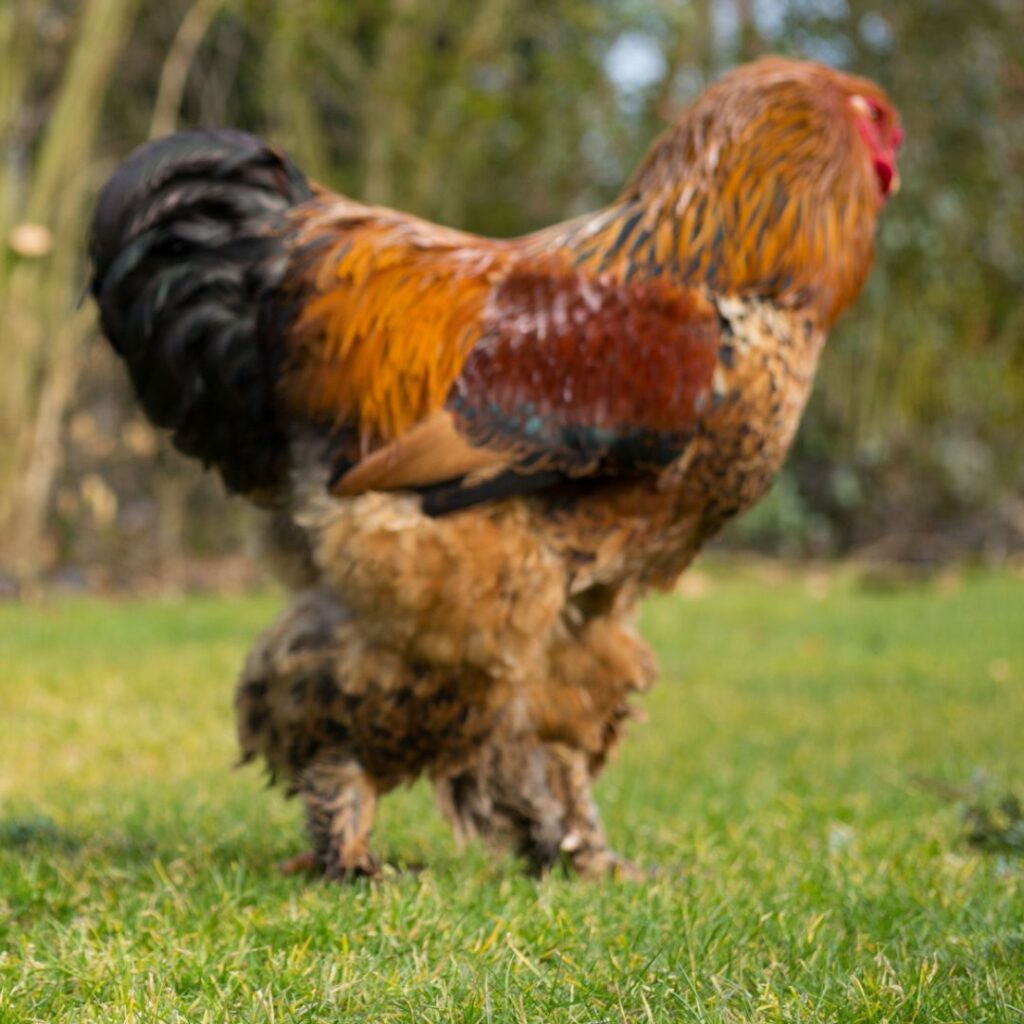
The Brahma chickens make popular homestead poultry birds. Egg production and meat production are only part of the appeal.
Their large size also hinders predators like hawks, while their hardiness is beneficial in colder climates.
The ladies have been known to go broody – potentially eliminating the need for an incubator for anyone who desires an ongoing sustainable flock.
All chickens need a place to roost, sleep, and lay eggs, but Brahma chickens require at least four-six square feet per bird inside the coop.
As these are much larger than other breeds. The nesting box should be at least 14×14 inches with additional bedding so the hen can easily lay her eggs without breaking them.
When planning your run or pen area, provide a minimum of 10-15 sqft per chicken. If you are regularly free-ranging your flock, this outdoor size can be reduced by a little bit.
- Recognized by APA (American Poultry Association) – Yes, 1874
- Cold Hardy – Yes
- Heat Tolerant – Yes
- Dual-purpose breed – Yes, excellent birds for eggs and meat.
- Size – Brahma Hens –9 1/2 lbs, Roosters – 12 lbs
- Eggs – Large, brown, 180-240 eggs per year
- Personality – Gentle, calm and friendly, docile, even a male Brahma chicken makes an excellent pet.
Fun Fact: As one of the biggest chicken breeds, The Brahma has been noted in the Guinness book of records for one monstrous Brahma chicken breed named Weirdo, who topped the charts at 22 lbs.
Buckeye Chickens
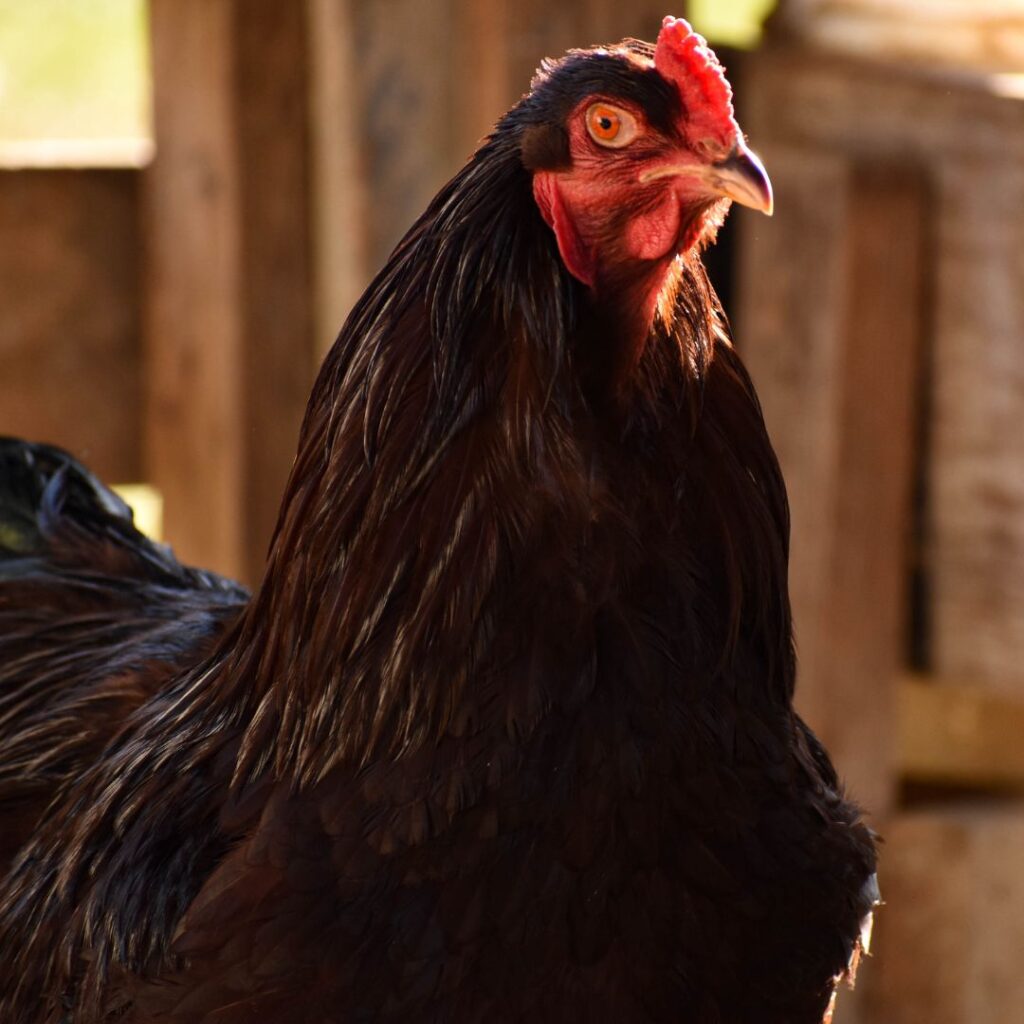
The Buckeye chicken is renowned for being particularly unique, as it was the only American chicken breed to be developed by a woman, Mrs. Nettie Metcalf.
The Buckeye roosters are significantly larger and heavier than hens, weighing an average of nine pounds, while the hens tend to weigh only 6 1/2 lbs. The rooster’s size makes this chicken one of the ‘largest chicken breeds.’
A striking feature of the Buckeye chicken is its body shape; short and broad back angled at a slant with meaty thighs, mighty wings, and impressive breast that draws similarities to the Cornish chicken breed.
- Recognized by APA – Yes, 1904
- Cold Hardy – Excellent birds for cold climates
- Heat Tolerant – Yes
- Dual Purpose Bird – Excellent choice for a dual-purpose chicken
- Size – Hens –6 1/2 lbs, Roosters – 9 lbs
- Eggs – Medium, brown, 150 – 200 eggs per year.
- Personality – Docile birds with sweet dispositions and make great family pets. The Buckeye chickens are curious, active chickens that are great for free-ranging and foraging for food. All these qualities s will help keep your yard with fewer grubs and ticks.
Cochin Chickens
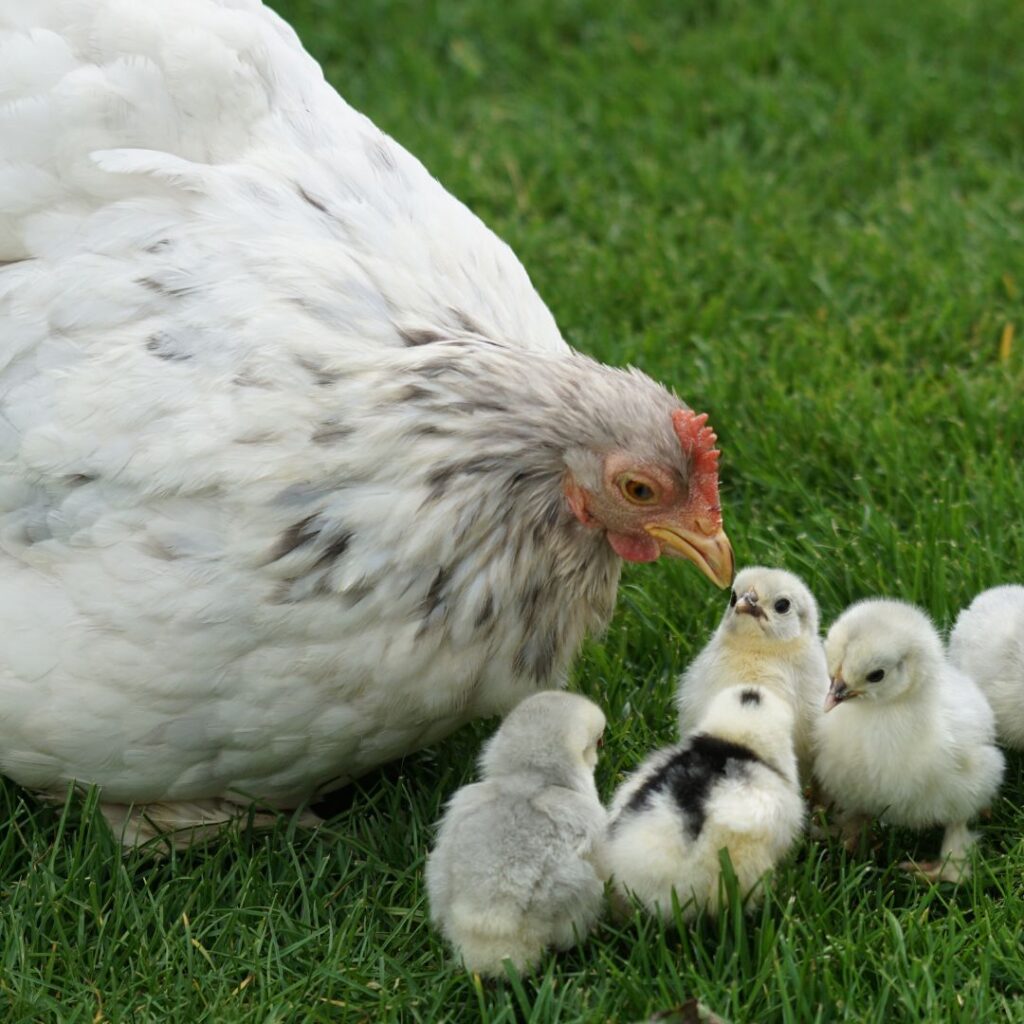
The Cochins we know today originate in China but have been widely loved in Europe and North America since they were first brought over in the 1840s and 1850s.
Distinguished by a large, fluffy body with soft and full feathers of many colors, Cochin chickens’ most endearing feature is their heart-shaped silhouette, complete by their feathering extending down to the legs and toes.
- Recognized by APA – Yes, 1874
- Cold Hardy – Yes
- Heat Tolerant – No
- Dual purpose breed – Not very good.
- Size – Hens – 8 1/2 lbs, Roosters – 11 lbs
- Eggs – Medium, Brown, 120-160 per year
- Personality – Known in the chicken world as gentle giants, these chickens are a docile, calm, and friendly breed and are even seen as lap birds, enjoying their human’s company.
Cornish Chickens
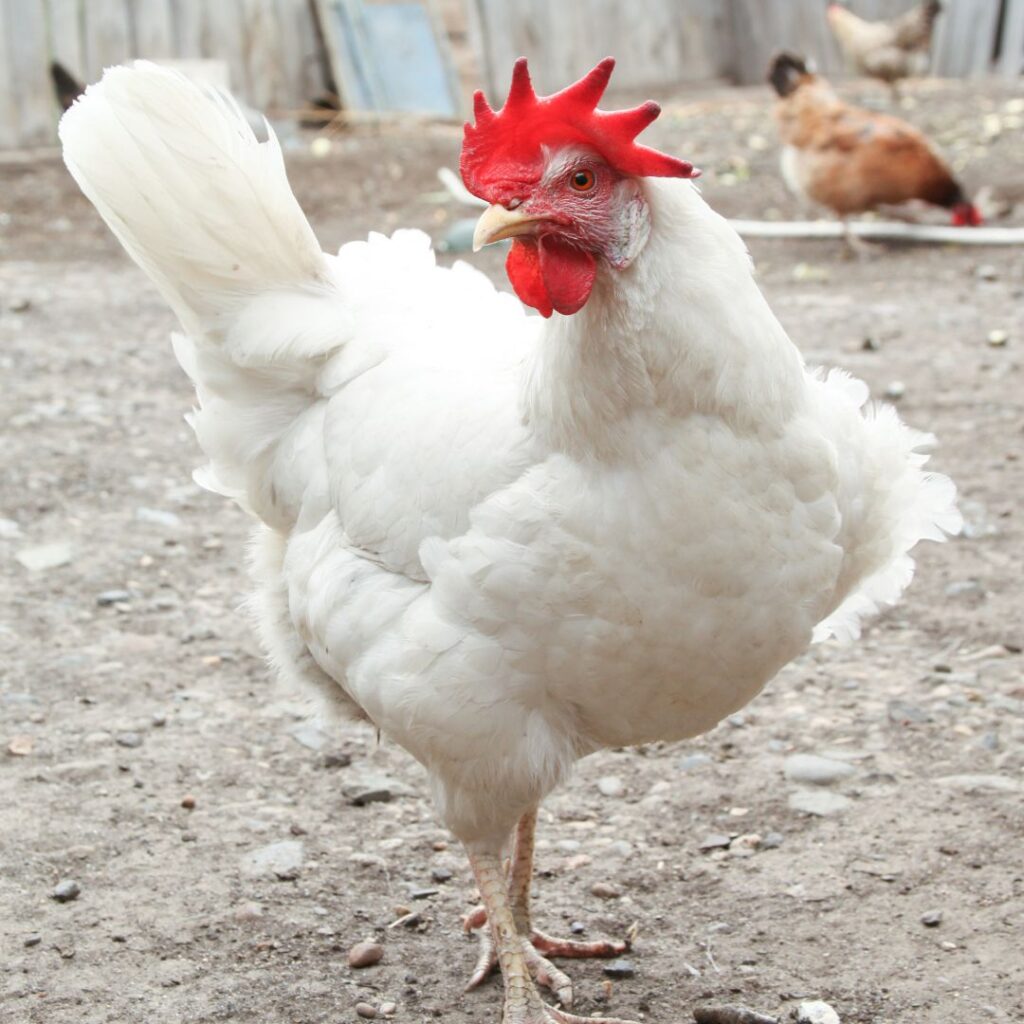
The Cornish chicken is a unique heritage breed from Cornwall, England, nearly two centuries ago. A cross between the Dorking and the Plymouth Rock breeds, the resulting chickens were larger and heavier than their parents.
There are also breeds of Cornish chickens cross-bred specifically for meat. Most likely, you’ve had a Cornish Cross, Jumbo Cornish chicken, or Cornish Rock chicken on your kitchen table.
- Recognized by APA – Yes, 1893
- Cold Hardy – Yes
- Heat Tolerant – No
- Dual-purpose breed – Yes, a superior meat bird
- Size – Hens – 7 – 8 lbs, Roosters –
- Eggs – Large, brown, approx 150 per year
- Personality – Docile, friendly, quiet, laid back
Delaware Chicken
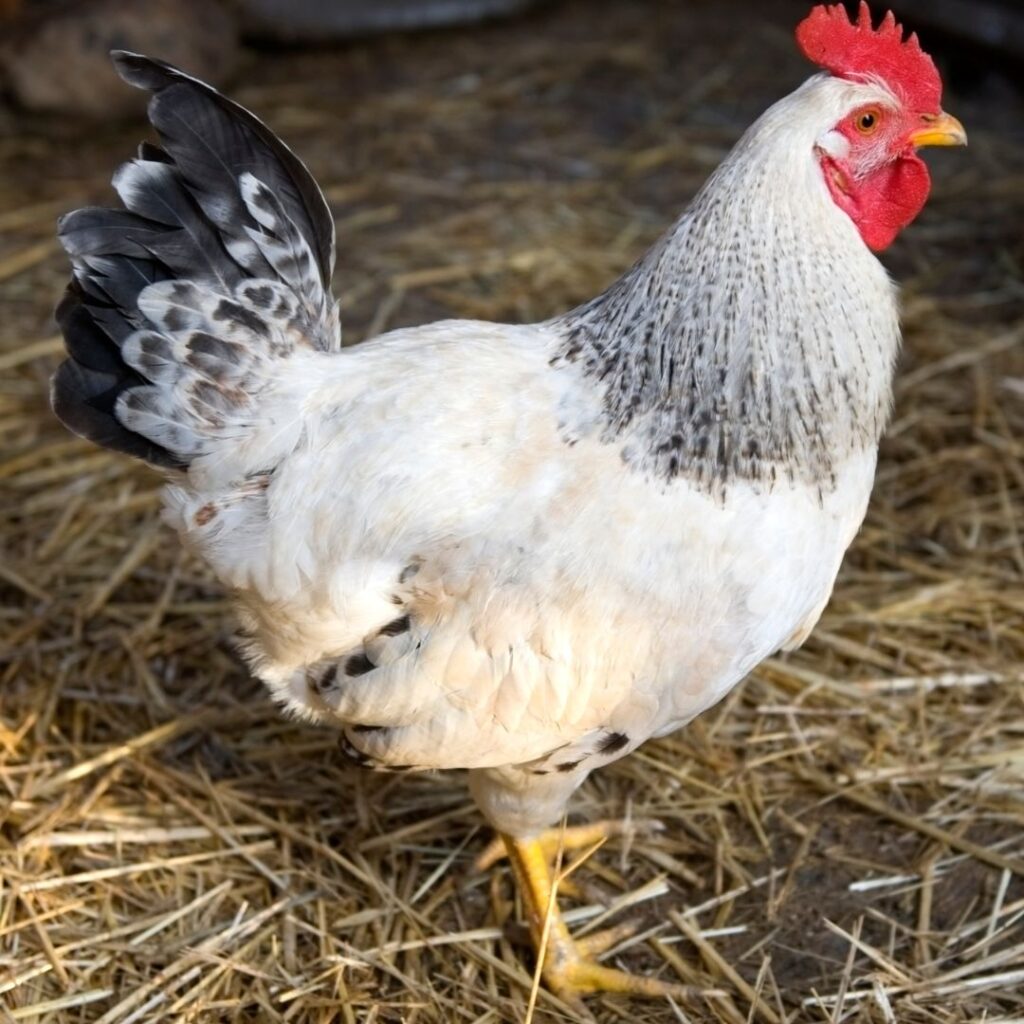
With its name originating from its home state, the Delaware chicken is a prized American breed, developed in 1940.
Not only are they considered an all-purpose layer with a good, long laying season, but they also have an ability to go beyond backyard flocks, tending to do well in free-range and pasture environments.
- Recognized by APA – Yes – 1952
- Cold Hardy – Excellent, mostly because of their body size
- Heat Tolerant – Do well with proper shade and coop/yard preparation.
- Dual Purpose Breed – Yes, a great choice for an egg and meat chicken.
- Size – Hen – 6 1/2 lbs, Rooster – 8 1/2 lbs
- Eggs – Extra Large, Brown, 175-250 eggs per year
- Personality – Chatty, loud, friendly, curious, independent
Dong Tao Chickens, AKA Dragon Chicken
The Dong Tao chicken, or Dragon Chicken as it’s commonly referred to, is a rare breed and extraordinary Vietnamese chicken breed. Once bred solely for the Vietnamese royal family, they have recently gained massive popularity due to social media.
These unique chickens are remarkable in their appearance, with feet as thick as a human wrist, plus very large legs and heads, and of course, an impressive tail.
- Recognized by APA – Yes, 1893
- Cold Hardy – Yes
- Heat Tolerant – No
- Dual Purpose Breed – Yes
- Size – Hens 7 1/2 lbs, Roosters 9 1/2 lbs
- Eggs – Large, brown,
- Personality – Calm, docile, good choice for a (beginner) new chicken keeper
German Langshan
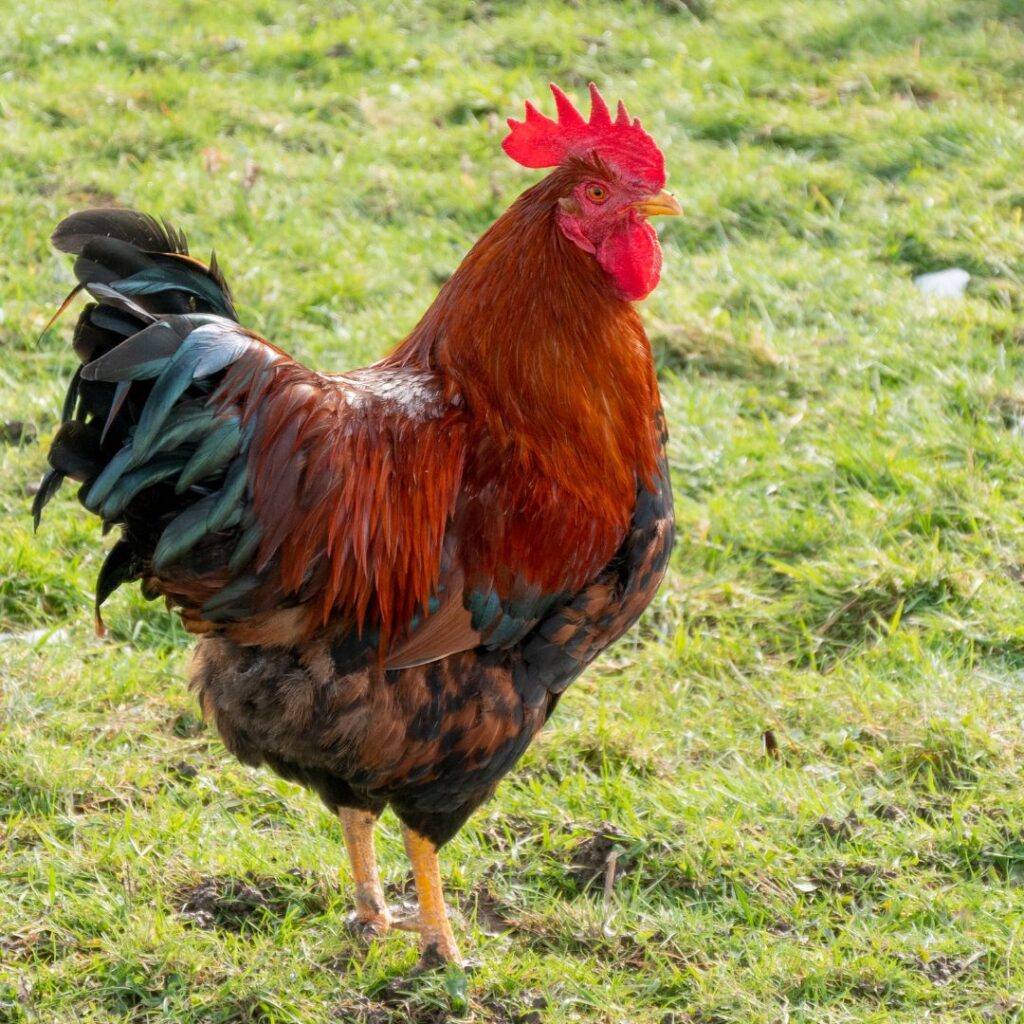
The German Langshan is a large, robust chicken breed that can be readily recognized by its long, high-standing legs and strong body.
Originating from the Croad Langshan, the Plymouth Rock, and Minorca in the 1970s, this breed is often used for poultry shows and exhibitions due to its stunning black, white dark brown, and blue colors.
- Recognized by APA – Yes, 1893
- Cold Hardy – O.K.
- Heat Tolerant – Yes
- Dual Purpose Breed – No, because egg production is low.
- Size – Hens 7 1/2 lbs, Roosters 9 1/2 lbs
- Eggs – Large, cream-colored, up to 180 per year with little exception to molting periods, making them ideal for consistent egg production.
- Personality – Tame and friendly – perfect for even novice chicken keepers
Jersey Giant Chickens
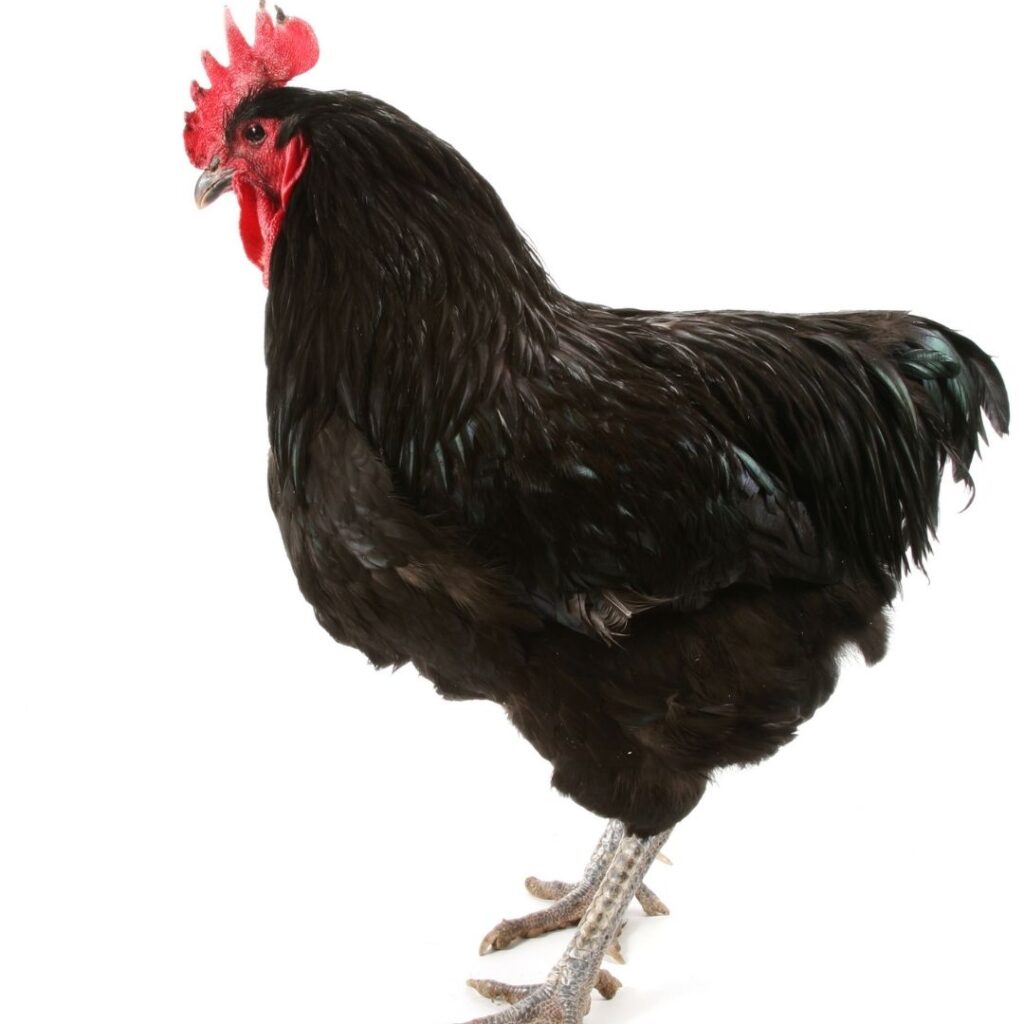
The Jersey Giant is a truly impressive large breed of chicken. These birds are notable for their size and formidable strength due to their muscular body types.
Various chickens, such as the Brahma, Cochin, and Langshan, were crossed to create this statuesque breed. This unique combination created a bird with good meat qualities while contributing eggs.
The Jersey Giant has color variations, with the black Jersey Giant being the largest and the Blue and White Jersey Giant.
Jersey Giants require extra space for their size. Ensure your coop is large enough, with at least eight square feet per bird. This will help those giants stretch their wings and move around comfortably.
Be aware that the birds can reach upwards of 26-28 inches in height, so plan accordingly – the ceiling should be at least 24 inches off their heads, and the roosting area should measure between 15-18 inches above the floor.
For outside runs, an ideal size would be 10 – 15 square feet per chicken minimum – they need a big area to feel content. Remember to leave room for those dust baths too. With proper planning, you can successfully house Jersey Giants in your backyard.
- Recognized by APA – Yes, 1922
- Cold Hardy – Yes
- Heat Tolerant – O.K. with proper shade and water
- Dual Purpose Breed – Yes
- Size – Hens – 11 lbs, Roosters – 13 lbs (occasionally 15lbs!) 22-26 inches tall
- Eggs – Medium-Large, 175-250 brown eggs per year.
- Personality – Docile breed, friendly, and make for good pets.
Malay Chicken
The Malay chicken breed is known for reaching up to 30 inches tall at maturity. This height gives the Malay giant chicken breeds the title of the tallest chicken breed. It originated from India and the Malay peninsula as a cross from local chicken breeds when it grew in popularity due to its impressive stature.
These chickens a most often kept for ornamental or show purposes. They do have good meat qualities, although their egg production is relatively low compared to most large chicken breeds.
Be aware, though, that Malay chickens can be quite aggressive, and they need a lot of space.
- Recognized by APA – Yes, 1883
- Cold Hardy – O.K.
- Heat Tolerant – Excellent
- Dual Purpose Breed – Yes, but meat can be tough. The bird’s fewer feathers make them easy to pluck.
- Size – Hens 9 lbs, Roosters 11 lbs
- Eggs – Medium, brown, 70-120 per year.
- Personality – Independent, space-loving chickens will become aggressive and be that ‘angry’ chicken if confined.One of the least likely chickens to play well with others. Mixed flocks are strongly discouraged.
New Hampshire Red
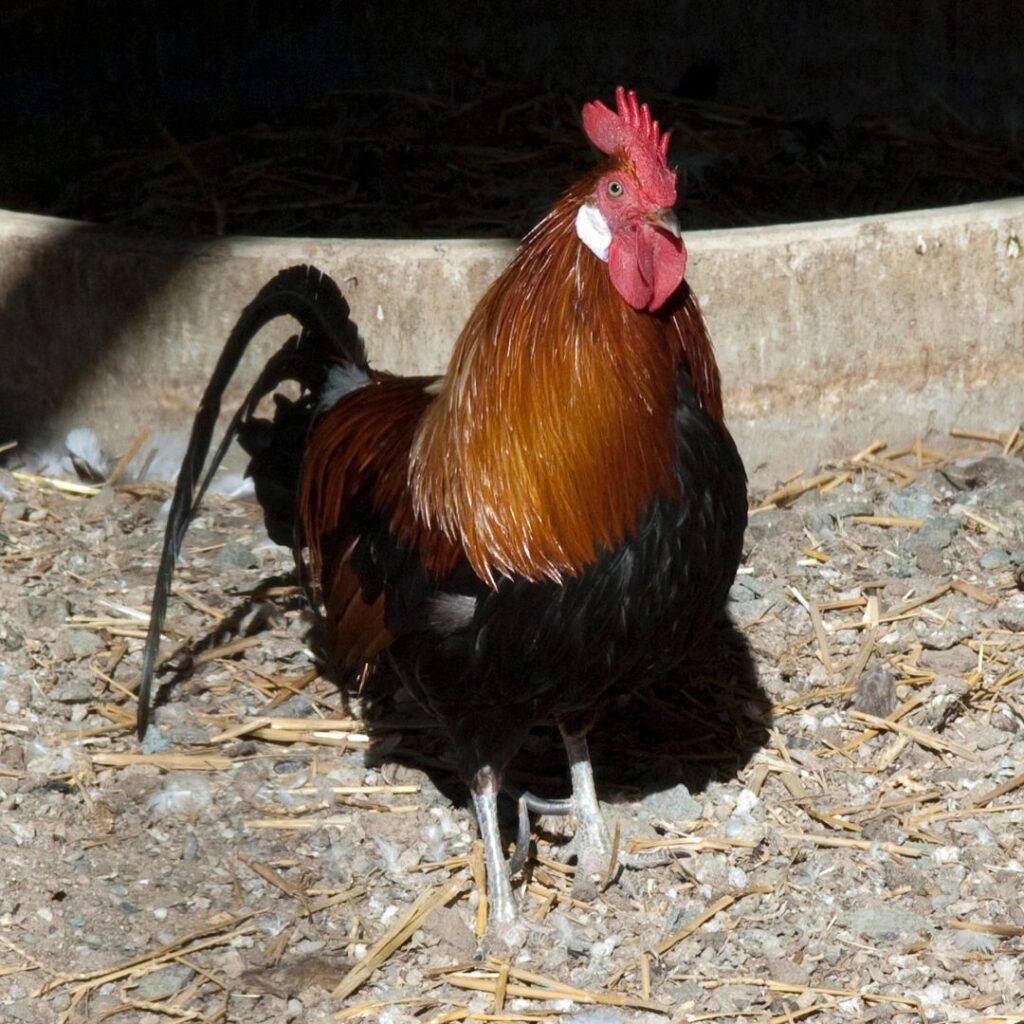
The New Hampshire Red is a genuine success story. Its development began in 1910, and the hard work of dedicated poultry farmers finally paid off with the breakthrough coming in 1918.
This hardy breed was refined and perfected throughout subsequent generations until the American Poultry Association could officially accept it as a separate breed.
The New Hampshire Red’s rise to glory as an excellent dual-purpose chicken is very appropriate since these birds boast an excellent egg-laying capacity and efficient meat production.
- Recognized by APA – Yes, 1935
- Cold Hardy – Excellent
- Heat Tolerant – Good with proper shade and coop preparation
- Dual Purpose – Absolutely, one of the better dual-purpose choices
- Size – Hen – 6 1/2 lbs, Rooster – 8 1/2 lbs
- Eggs – Large-Extra Large, brown, 200-280 eggs per year
- Personality – Varies from friendly and curious to aggressive and territorial. They are near the top of the pecking order.
Orpington Chicken
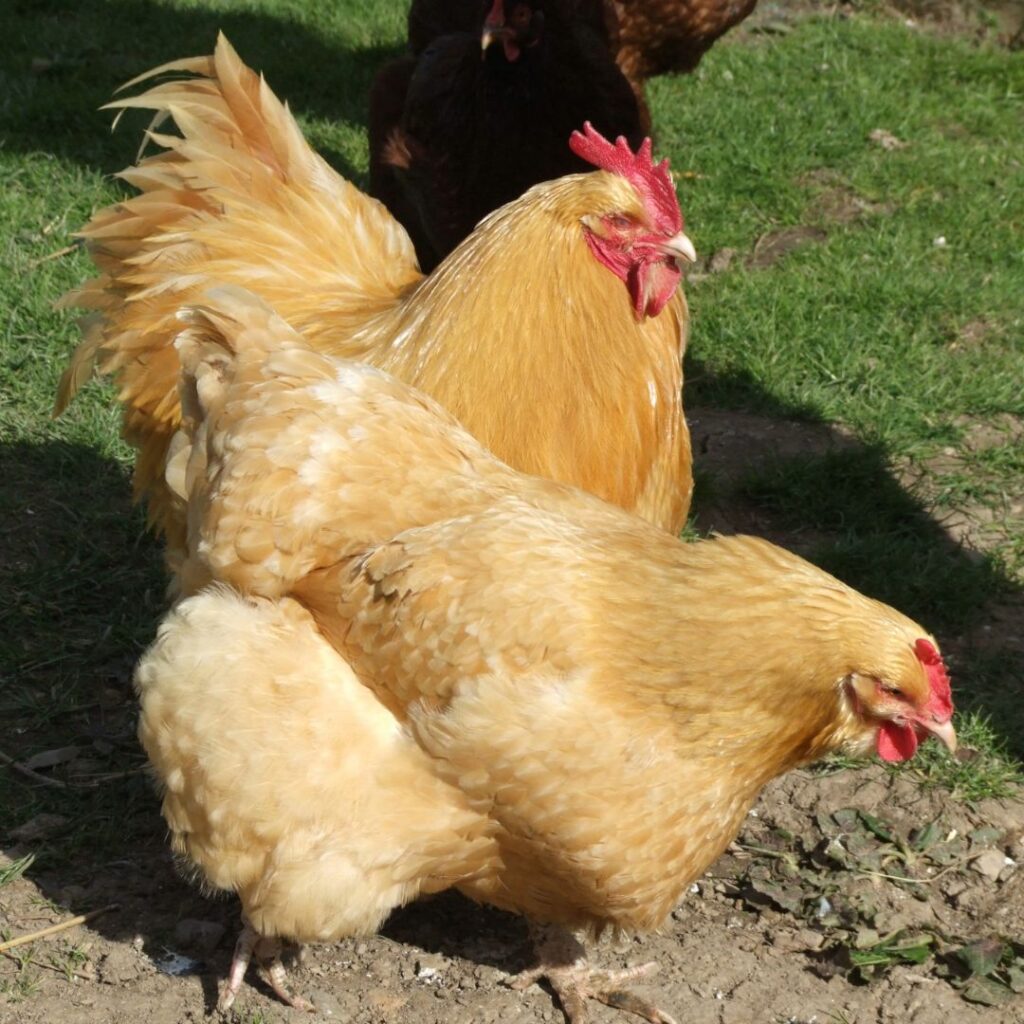
The Orpington Chicken is truly an enchanting animal. It traces its roots back to England and can lay eggs regularly.
Intended for both meat and egg production, the original ‘Black Orpington’ was an amalgamation of Langshan, Barred (Plymouth) Rock, and Minorca breeds.
The ‘Buff Orpingtons’ were crafted by combining Buff Cochins, Dorkings, and Gold-Spangled Hamburgs.
- Recognized by APA – Yes, Buff – 1902, Black, White – 1905, Blue – 1923
- Cold Hardy – Yes
- Heat Tolerant – No
- Dual purpose – Yes, another great choice for eggs and meat.
- Size – Hens – 7-8 lbs
- Eggs – Medium – Large, brown, 200-280 per year
- Personality – Peaceful nature, calm, friendly, also make great pets
Plymouth Rock Chickens, aka Barred Rock

The Plymouth Barred Rock chicken is an American classic. Plymouth Barred Rock chicken is an American breed known for its dual-purpose utility.
The origin of these birds can be credited to the cross between Black Java hens and males of the common dunghill fowl. Breeders then further sourced and intensely screened the offspring to select only those with clean yellow legs and barred feathers to create a uniform breed.
Barred Rocks are now one of the most popularly known dual-purpose chickens in the United States.
This breed has contributed to the development of other breeds, such as Rhode Island Red, New Hampshire Red, and Silver-Laced Wyandotte.
- Recognized by APA – Yes – 1874
- Cold Hardy – Yes
- Heat Tolerant – Yes
- Dual Purpose – Yes
- Size – Hen – 7 1/2 lbs, Rooster – 9 1/2 lbs
- Eggs – Large, Brown, 200 – 280 eggs per year
- Personality – Quiet, friendly, playful, tolerates being handled, good family pet
Rhode Island Reds
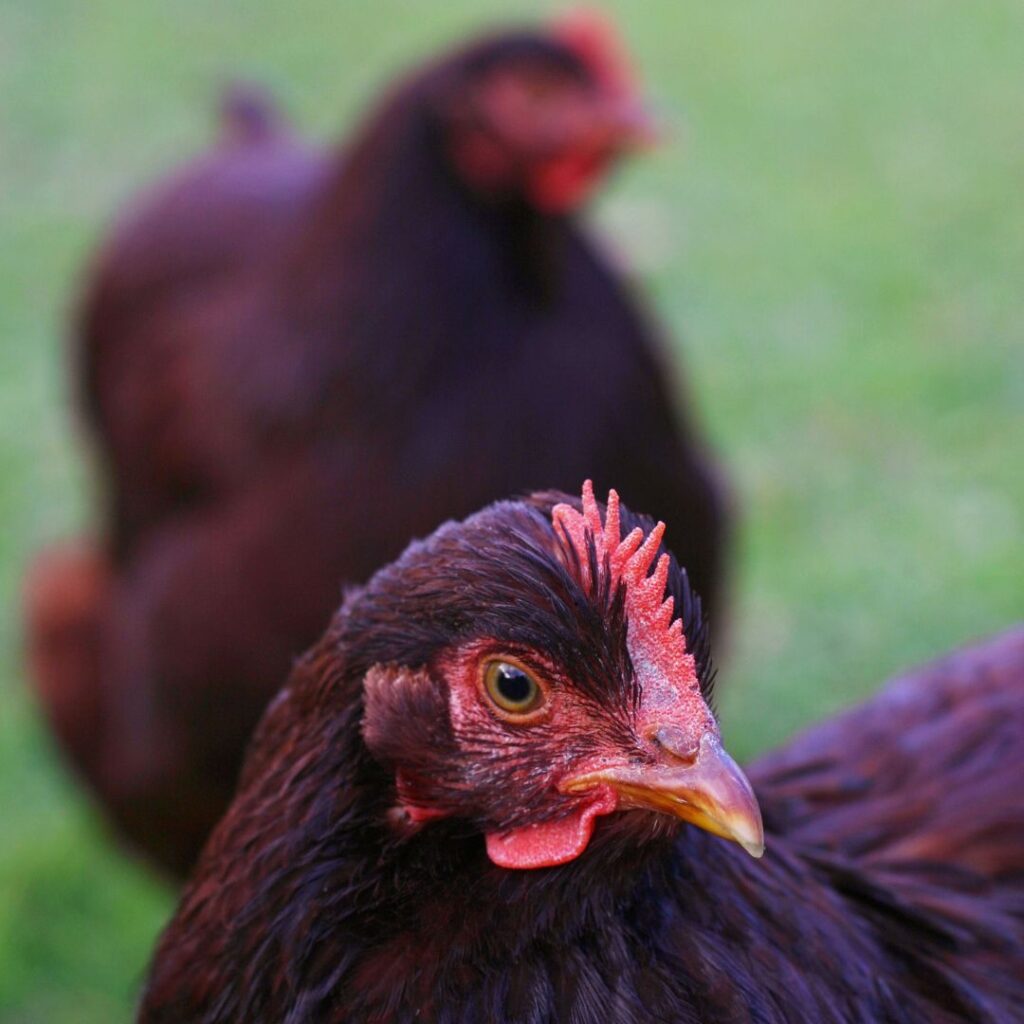
The Rhode Island Red is a beloved bird for many in the United States. First introduced in Providence, Rhode Island, in 1874, the Rhode Island Red chicken is renowned for its hearty demeanor, solid egg-laying capabilities, and meat.
The breed was originally developed from a Malay and Shanghai chickens cross.
Today they remain one of the most popular breeds among chicken lovers throughout the United States due to their hardiness and efficiency.
This breed is so hardy it’s one of the most preferred domestic chickens for beginner chicken keepers.
- Recognized by APA – Yes – 1904
- Cold Hardy – Excellent
- Heat Tolerant – Yes
- Dual Purpose – Yes
- Size – Hen – 6 1/2 lbs, Rooster – 8 1/2 lbs
- Eggs – Large, 200-280 brown eggs per year
- Personality – Active, curious, friendly, higher on the pecking order.
Read more about cleaning and storing fresh eggs here.
Do Larger Chickens Lay Larger Eggs?
Another common misconception about larger chicken breeds is that they lay bigger eggs than smaller hens, but this isn’t necessarily true.
While most large breed hens do lay bigger eggs than smaller hens on average (due in part to having larger reproductive organs), there isn’t any guarantee that your particular bird will lay bigger eggs than smaller chickens; it all depends on the breed and genetics of your breed of chicken.
For example, the Golden Comets and the White Leghorns are much smaller breeds well-known for their frequent and large to jumbo-sized eggs.

Are Larger Chicken Breeds More Aggressive?
While some might assume larger chicken breeds are more aggressive than smaller ones due to their size and stature, this is not necessarily true.
Like all living creatures – each chicken has their personality and behaviors that determine how it will act around other chickens, flock mates, and their owners.
So while it’s true that some large chicken breeds may be more prone to aggression due to their size, temperament, or genetics, this does not mean a large chicken equals an aggressive chicken.
Chickens are generally peaceful, and most breeds can make friendly pets.
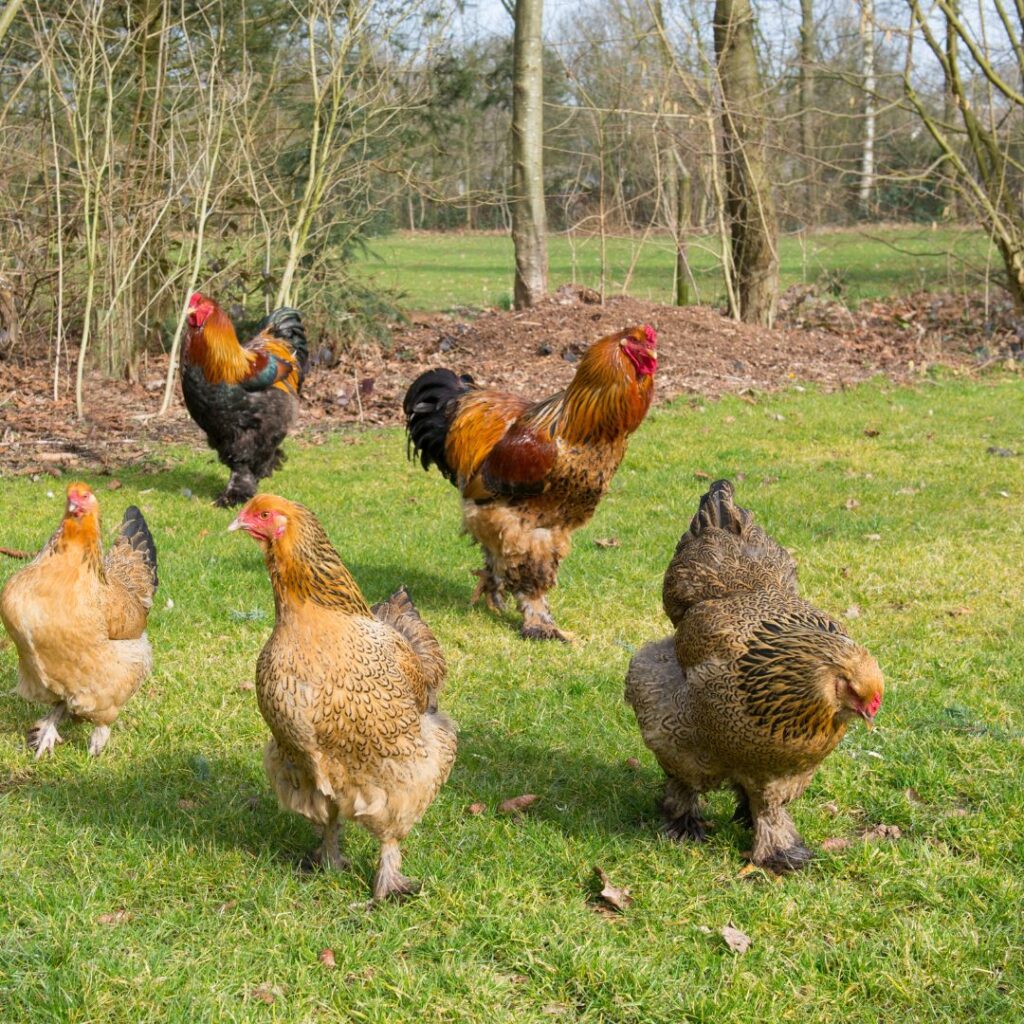
Exceptions to the friendly chicken are some breeds, like wilder chickens that have recently been domesticated, such as breeds in the jungles and forests of Asia, tend to be more aggressive than other types.
Remember, even with a docile breed of the rooster, the instinct for the males is to protect their flock. Roosters also become territorial during the breeding season.
Knowing these tendencies about certain kinds of larger chicken breeds can help those considering taking them in to make an informed decision about the type of pet they would like to add to their family.
What Is The Friendliest of the Larger Chicken Breeds?
The friendliest of the largest chicken breeds are the Cochin, Brahma, Orpington, and Naked Necks.
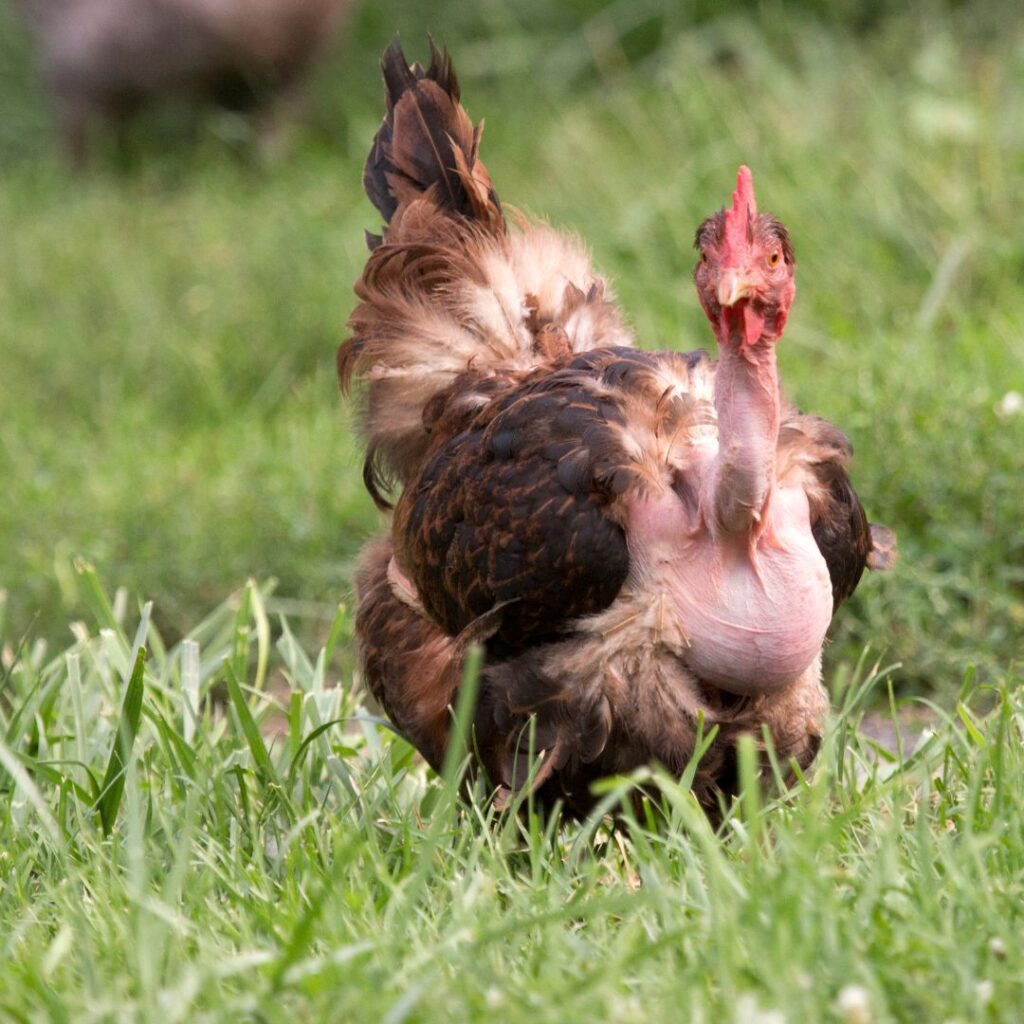
Is A Big Chicken Breed Right For Your Backyard Chicken Flock?
Whether you’re looking for an efficient source of fresh eggs or want a gentle giant as part of your backyard flock – owning larger chicken breeds can offer plenty of benefits.
From providing more meat per bird and plenty of eggs, there are many advantages when raising chickens larger than your standard breeds.
Before adding new birds, research to understand potential temperament differences between small and large birds and how much feed and space they’ll need.
All in all, though – if done correctly – no doubt owning larger chickens can be an advantageous experience.


